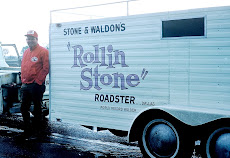Thursday, April 18, 2013
Doolittle Bombs Tokyo....April 18, 1942
I know I probably posted this story last year, but it is a milestone in American history that should be acknowledged annually. The mainstream media will probably neglect it in their daily diatribe, so I am here to make sure the public remembers.
It was April 18th of 1942 and American President Franklin D. Roosevelt was intent on finding a way to strike back at the Japanese after they bombed Pearl Harbor the previous December. The United States did not have a base from which they could reach the Japanese homeland. Someone came up with the idea of launching bomber aircraft from a carrier ship, something that had never been done in the past.
Lieutenant-Colonel James Doolittle was put in charge of finding and training a group to do just that. The B-25 Mitchell bomber was selected since the huge B-17 was simply too large for the mission. The group of men and planes trained in Florida and a Navy officer marked off the distance of a carrier deck and told them they had to get airborne within that distance.
Sixteen B-25's took off from the U.S.S. Hornet and bombed not only Tokyo but several other Japanese cities. The damage was minimal, but Japan's claim to be invincible was now a thing of the past. America's might was felt for the first time, but it would not be long before the tide of the war turned and skies over Japan would be filled with B-29 Stratofortresses. Of the original 80 men involved in the Doolittle raid, only 5 are still alive as of this writing. On August 6, 1945 the B-29 'Enola Gay' dropped the first atomic bomb on the city of Hiroshima, Japan, but the government still refused to surrender. Three days later the city of Nagasaki, Japan was struck by a second massive blast and the Japanese surrendered, ending World War II.
Editor's Note: In 2008 a hurricane threatened the coast of Texas and some of the planes of the Confederate Air Force sought safety further inland. Five of the planes landed in my hometown of Sherman/Denison and one of them was a B-25 Mitchell (my favorite bomber of the war years). Upon arriving at the airfield you can imagine my surprise to find one of the surviving raiders from Doolittle's mission.
The men involved in the Doolittle raid never thought of it as a suicide mission, but simply as a high risk assignment. One flight crew was captured by the Japanese, one plane landed in Russia, and the rest made it to China or the waters off China. Doolittle thought he would be court-martialed for losing so many planes, but Roosevelt called it a complete success and promoted Doolittle to the rank of General.
Subscribe to:
Post Comments (Atom)







No comments:
Post a Comment